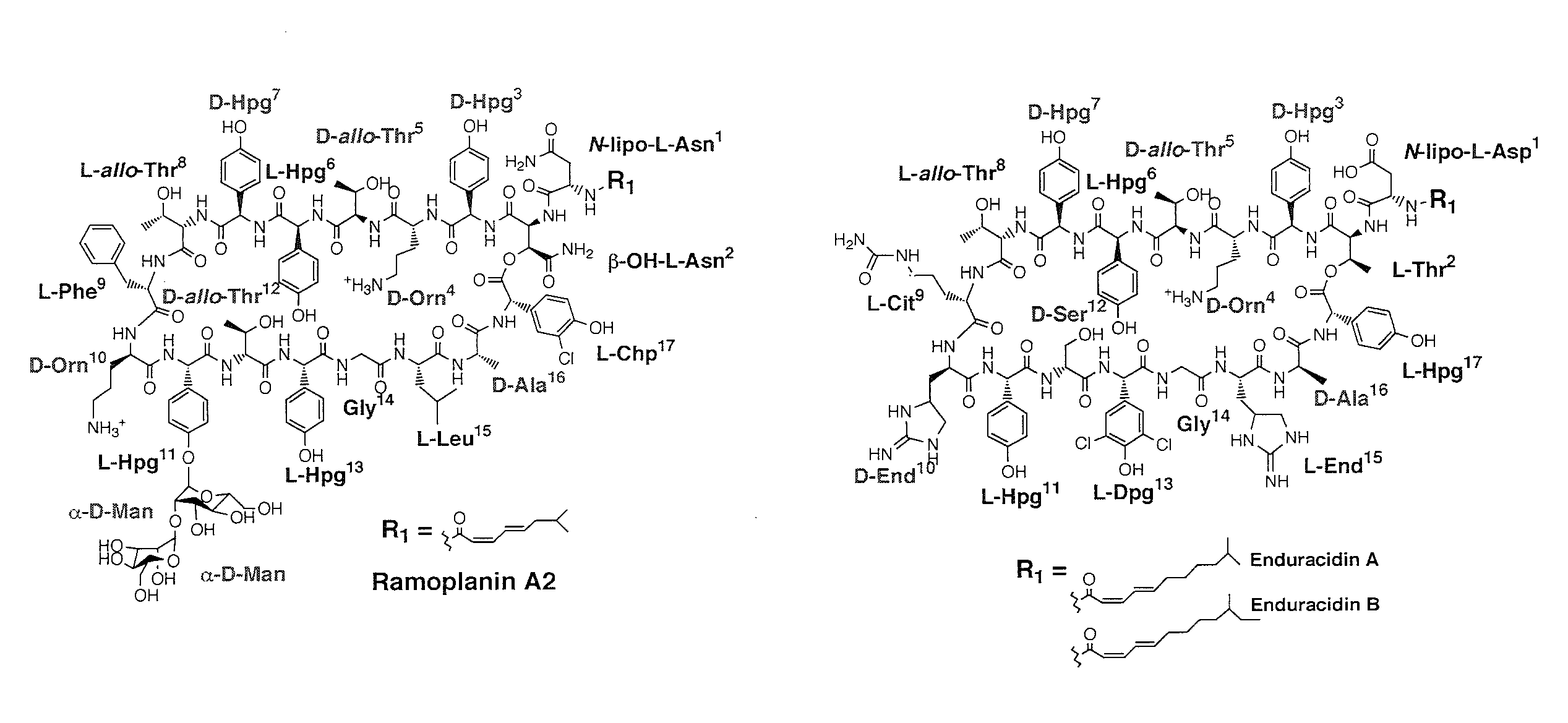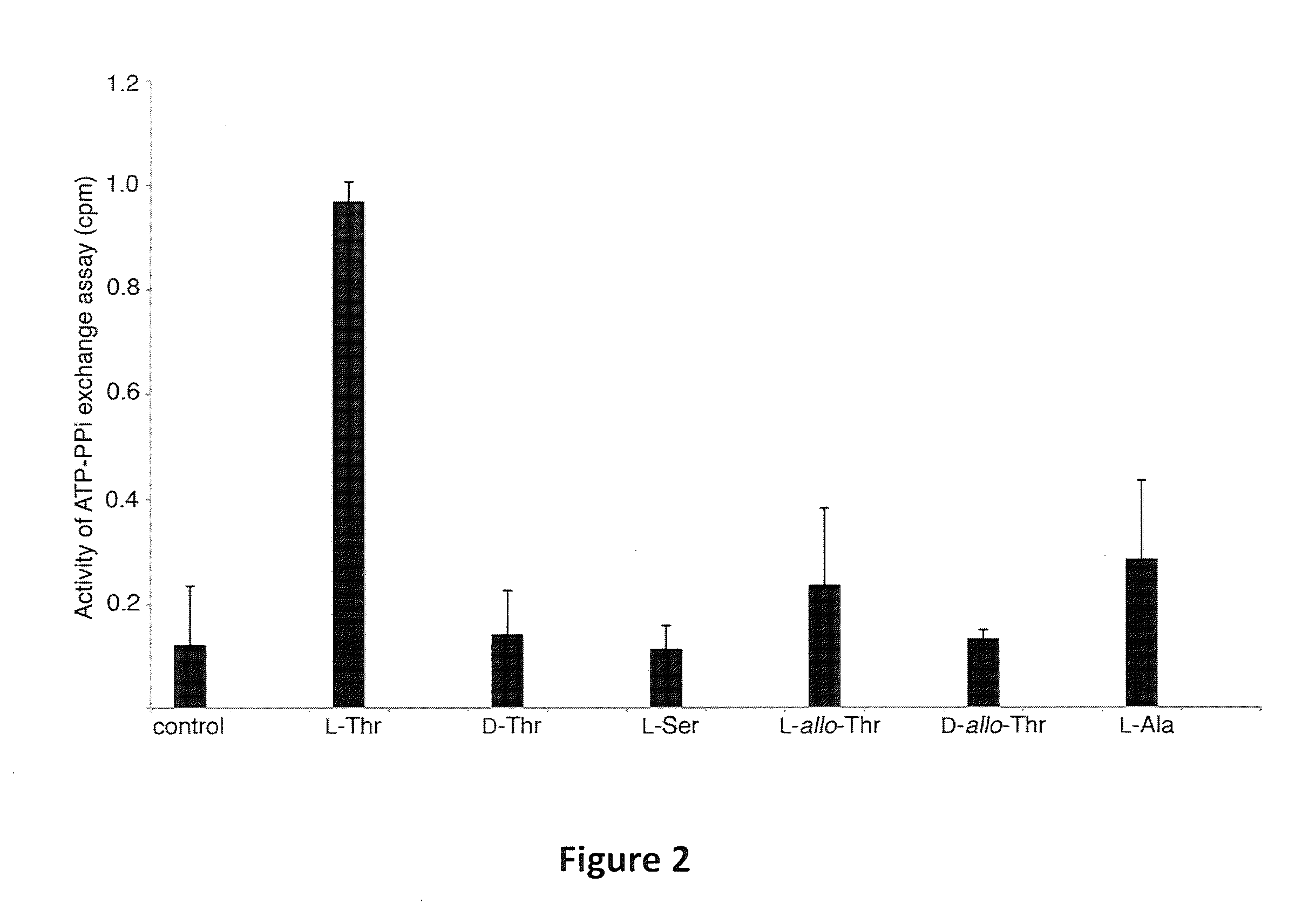Chaperone-assisted protein expression and methods of use
a technology of chaperone and protein, applied in the field of recombinant dna technology, can solve the problems of inability to produce high concentrations of protein, inability to clone and express, and most present a significant challenge to clone and express, and achieve the effect of high success ra
- Summary
- Abstract
- Description
- Claims
- Application Information
AI Technical Summary
Benefits of technology
Problems solved by technology
Method used
Image
Examples
example 1
[0081]Ramoplanin Biosynthetic Proteins: Chaperone proteins have been shown to increase the yield and solubility of proteins expressed in host systems. Previous to this work, the Escherichia coli (E. coli) heat shock proteins, GroES and GroEL, have been characterized and their mechanism of action studied (see, e.g., Buchner, J. et al.). The GroEL and GroES genes encode proteins for 57 kDa and 10 kDa, respectively. GroEL belongs to the Hsp60 family.
[0082]N-acylated antibiotics have demonstrated their importance in treating otherwise resistant infections (Walsh, C. (2003) Antibiotics: Actions, Origins and Resistance, ASM Press, Washington, D.C.). As shown in FIG. 1, ramoplanin A2, a non-ribosomally synthesized peptide antibiotic, is highly effective against several drug-resistant gram-positive bacteria, including vancomycin-resistant Enterococcus faecium (VRE) and methicillin-resistant Staphylococcus aureus (MRSA), two important opportunistic human pathogens (Landman, D. et al. (1996) ...
example 2
[0085]Expression of the Ramoplanin Biosynthetic Proteins: Close inspection of the ramoplanin NRPS indicates that it is a type C NRPS. The NRPS system is composed of six proteins that activate amino acids and condense them to form the final product. The seventeen amino acid secondary metabolite biosynthetic cluster possesses sixteen adenylation domains, indicating that one of the domains must function twice. Ramo12 is hypothesized to activate both the first and second amino acid, L-asparagine, in the final product. Additionally, Ramo12 mediates the attachment of the fatty acid chain to the N-terminus of the growing polypeptide. The Ramo13 NRPS protein is lacking a hypothesized adenylation to activate L-threonine Sequence analysis of the Ramo17 protein reveals an adenylation and thiolation domain which is predicted to activate L-threonine and could function in trans to fulfill this role (Stachelhaus, T. et al., (1999) Chem Biol. 6:493-505). Indeed, as shown in FIG. 2, the ATP-PPi exch...
example 3
[0087]Protein images of soluble protein with GroESL: Previously in our laboratory, we cloned and attempted to express the biosynthetic genes from the ramoplanin A2 antibiotic producer Actinoplanes with limited success. Co-expression of our genes of interest on a plasmid with a plasmid containing the E. coli GroESL gene led to an increase in soluble protein. Previous experiments had suggested to us that expression of our genes in a Stretomyces lividans expression system, which exhibited a similar genetic architecture to the native producer, would be successful. Genes were cloned into expression plasmids for S. lividans and expressed. Although the proteins of interest were expressed in soluble form, the lack of an inducible system to produce high yield amounts of protein limited this approach. Based on this success, it was decided to attempt to clone the GroESL analog from S. lividans and co-express it on a separate plasmid in an E. coli system. An analysis of the S. lividans genome r...
PUM
| Property | Measurement | Unit |
|---|---|---|
| melting temperature | aaaaa | aaaaa |
| Tm | aaaaa | aaaaa |
| Tm | aaaaa | aaaaa |
Abstract
Description
Claims
Application Information
 Login to View More
Login to View More - R&D
- Intellectual Property
- Life Sciences
- Materials
- Tech Scout
- Unparalleled Data Quality
- Higher Quality Content
- 60% Fewer Hallucinations
Browse by: Latest US Patents, China's latest patents, Technical Efficacy Thesaurus, Application Domain, Technology Topic, Popular Technical Reports.
© 2025 PatSnap. All rights reserved.Legal|Privacy policy|Modern Slavery Act Transparency Statement|Sitemap|About US| Contact US: help@patsnap.com



